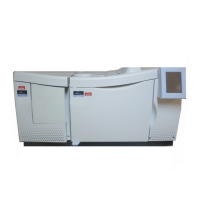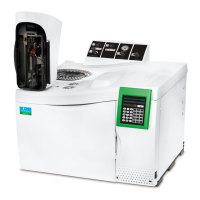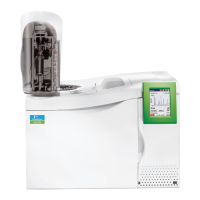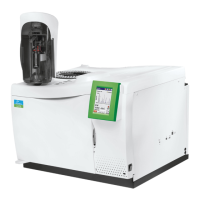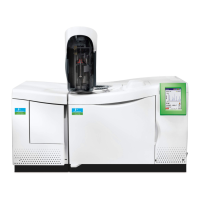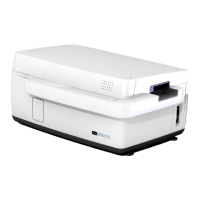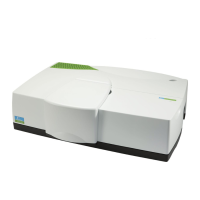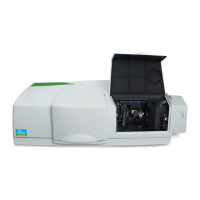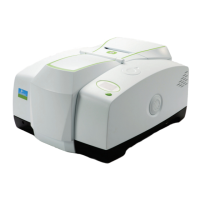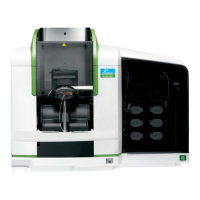Do you have a question about the PerkinElmer chemagic 360-D and is the answer not in the manual?
Details changes made in this manual, marked with underlined text.
Lists registered trademarks of PerkinElmer and other companies.
Defines the chemagic 360-D as an IVD instrument for DNA and RNA extraction.
Explains various symbols used in the documentation and their meanings.
Explains the magnetic separation mechanism using metal rods and electromagnets.
Explains the conventions used for warnings, cautions, and notes in the documentation.
Provides essential safety precautions for operating the chemagic 360-D instrument.
Details safety measures related to electrical connections and servicing of the instrument.
Outlines precautions for handling potentially biohazardous materials and cleaning.
Advises on the correct use of the PC and software to prevent operational issues.
Discusses EMC compliance and precautions related to electromagnetic fields.
Provides specific safety instructions for operating the instrument, including PPE and avoiding hazards.
Instructions for reporting serious incidents related to the device in the EU and similar regulatory regions.
States that installation and calibration must be done by trained and authorized personnel.
Introduces the software and its advanced features, requiring a license key.
Details the software installation process, including required files and folders.
Guides on how to launch the chemagic Software application.
Explains the process of logging into the chemagic 360-D instrument's user interface.
Describes the login procedure and selecting the appropriate Rod Head type.
Introduces the main program window and its components after login.
Details how to load and unload racks and consumables onto the instrument's tracking system.
Provides steps for safely powering down the instrument and associated PC.
Explains the initial steps for starting a protocol with the 12 Rod Head.
Details running protocols when the chemagic Dispenser is installed.
Guides on running protocols when the chemagic Dispenser is not installed.
Describes how to register sample IDs and their eluates for the isolation process.
Explains how to import sample IDs from a prepared text file.
Details the process of entering or confirming elution IDs.
Guides on assigning individual IDs to buffer racks for better organization.
Provides final instructions and steps to begin the actual isolation run.
Outlines the initial steps for starting a protocol with the 24 Rod Head.
Details running protocols with the chemagic Dispenser.
Guides running protocols without the chemagic Dispenser.
Describes how to register sample IDs for the 24 Rod Head.
Explains importing sample IDs from a file.
Details entering or confirming elution IDs.
Guides on assigning IDs to plates/racks for buffer management.
Provides final steps before starting the isolation run.
Outlines the initial steps for starting a protocol with the 96 Rod Head.
Details running protocols with the chemagic Dispenser.
Describes registering sample IDs for the 96 Rod Head.
Details entering or confirming elution IDs.
Guides on assigning IDs to buffer plates.
Provides final instructions before starting the isolation run.
Introduces the System Settings window for configuring the software and instrument.
Explains how to manage user accounts, privileges, and passwords within the software.
Describes how to view and print log files generated during isolation runs.
Details routine and intensive cleaning procedures for the chemagic Dispenser.
Explains how to check the installed version of the chemagic Software.
Instructions on how to remove and install different chemagic Rod Heads.
Lists essential maintenance tasks and checks to be performed by the user.
Describes checking and priming the dispenser manifolds for optimal performance.
Provides instructions for comprehensive cleaning and disinfection of the instrument.
Details how to clean the chemagic Rod Heads if contamination occurs.
Instructions for cleaning the instrument's drop cover.
Safety precautions and guidance for moving the instrument.
Lists the physical dimensions, weight, power, and noise levels of the instrument.
Details the performance specifications of the buffer and washer liquid dispenser.
Specifies the ambient temperature, humidity, and altitude requirements for operation.
Defines the qualifications and training required for instrument operators.
Lists error codes and messages that may occur during software startup.
Lists errors related to reading and saving parameter files.
Lists errors encountered while reading or saving protocol files.
Lists errors that can occur when editing protocol files.
Lists errors and warnings related to user login and privilege levels.
Lists error and warning messages specific to the stripper component.
Lists error and warning messages related to the drop cover.
Lists errors occurring during the execution of a protocol file.
Lists errors related to the instrument covers not being closed properly.
Lists errors and warnings associated with the instrument's axes.
Lists communication errors between the instrument and its modules/axes.
Lists internal software errors that should not occur under normal conditions.
Provides solutions for the instrument failing to power on.
Offers steps to resolve issues when the chemagic Software fails to launch.
Addresses communication errors that happen during software startup.
Provides solutions for communication errors causing the software to freeze.
Solutions for when the X-axis status light doesn't turn green during referencing.
Explains why the Rod Head might stay low during tip take-up and how to fix it.
Addresses residual magnetic beads in plates and when it's tolerable.
Summarizes the limited warranty terms for the instrument.
Provides guidance on the disposal of Waste Electrical and Electronic Equipment.
| Type | Automated Nucleic Acid Extraction System |
|---|---|
| Throughput | Up to 96 samples per run |
| Extraction Chemistry | Magnetic bead-based |
| Magnetic Bead Technology | Yes |
| UV Decontamination | Yes |
| Power Requirements | 100-240 VAC, 50/60 Hz |
| Sample Types | Blood, plasma, serum, saliva, tissue, cells, plant material, forensic samples |
| Heating/Cooling | Integrated heating |
| Applications | Genomic DNA extraction, RNA extraction, Viral nucleic acid extraction |
| Operating Temperature | 15°C to 30°C |
| Humidity Range | 20-80% non-condensing |
| Sample Volume | 10 µL to 10 mL |
| Elution Volume | 50 µL to 500 µL |
